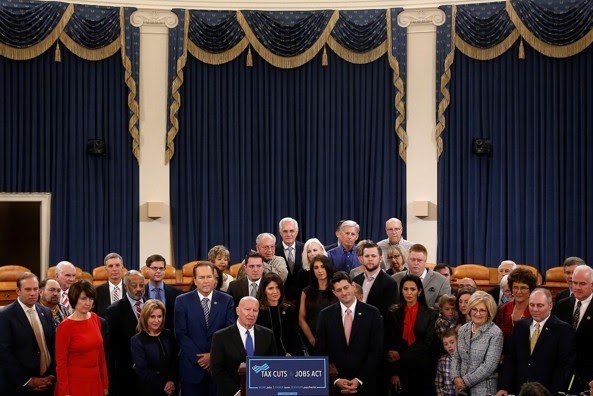
WASHINGTON (TIP): House Republicans unveiled their long-awaited tax cut legislation on Thursday, November 2, after having delayed it by one day, kicking off a fight that many in the GOP believe they must win to preserve their congressional majorities in the midterm elections next year.
House Speaker Paul Ryan, R-Wis., and GOP tax writers put forward a bill that would trim the number of tax brackets, while raising the standard deduction from $6,350 to $12,000 for individuals and from $12,700 to $24,000 for married couples.
The Tax Cuts and Jobs Act, which is subject to change and faces lingering questions of how it will be paid for, would cut the corporate tax rate to 20 percent from 35 percent, while eliminating the estate tax after six years.
CNN Money has published a rundown of key provisions that would affect individuals in an article What’s in the House tax bill for people by Jeanne Sahadi. Here is the published report
Here’s a rundown of key provisions that would affect individuals:
Reduces income tax brackets: There are seven federal income tax brackets in today’s code that are taxed at 10%, 15%, 25%, 28%, 33%, 35% and 39.6%.
The House bill consolidates those into four brackets:
12% (on the first $45,000 of taxable income for individuals; $90,000 for married couples filing jointly)
25% (starts at $45,000 for individuals; $90,000 for married couples)
35% (starts at $200,000 for individuals; $260,000 for married couples)
39.6% (starts at $500,000 for individuals; $1 million for married couples)
Nearly doubles the standard deduction: The bill raises today’s standard deduction for singles to $12,000 from $6,350 currently; and it raises it for married couples filing jointly to $24,000 from $12,700.
Eliminates personal exemptions: Today you’re allowed to claim a $4,050 personal exemption for yourself, your spouse and each of your dependents. The House bill eliminates that option.
For families with three or more kids, that could mute if not negate any tax relief they might enjoy as a result of other provisions in the bill.
Expands child tax credit: The bill would increase the child tax credit to $1,600, up from $1,000, for any child under 17.
But that $600 increase won’t be available to the lowest-income families if they don’t end up owing federal income taxes. That’s because unlike the first $1,000, the extra $600 won’t be refundable. Refundable means that if your federal income tax bill is zero, you get a check from the government because of the credit.
The bill would let more people claim the child tax credit. The income level where the credit starts to be phased out would increase to $115,000 for single parents, up from $75,000 today, and to $230,000 for married parents, up from $110,000.
Creates two new family credits: The bill would create two different $300 tax credits, but they would be in effect only for five years and would not be refundable.
The first would be for nonchild dependents — for instance, any son or daughter over 17 whom you’re supporting, an ailing elderly mother or an adult child with a disability. The second is a credit for each spouse if they file jointly (or, in the case of single parents, the head of household).
So, a family of four — two parents, a 12-year-old daughter and an 18-year-old son — could reduce their tax bill by $2,500, said Elaine Maag, a senior research associate at the Urban Institute. They would claim the $1,600 child tax credit for the daughter, the $300 nonchild dependent credit for the son and a $300 credit for each parent.
The income thresholds governing these two new credits are the same as for the child tax credit.





Be the first to comment